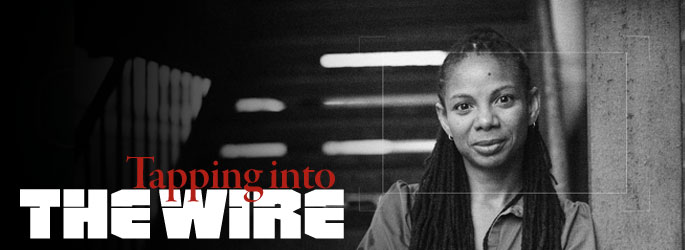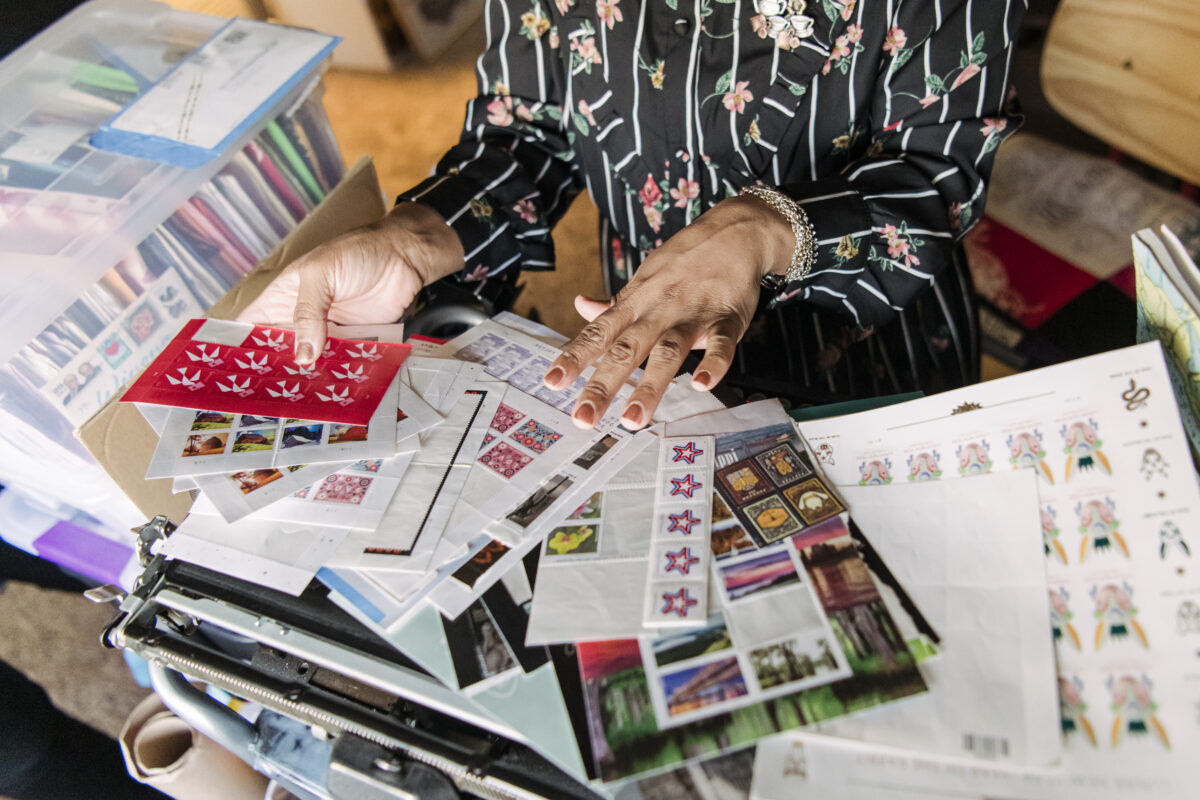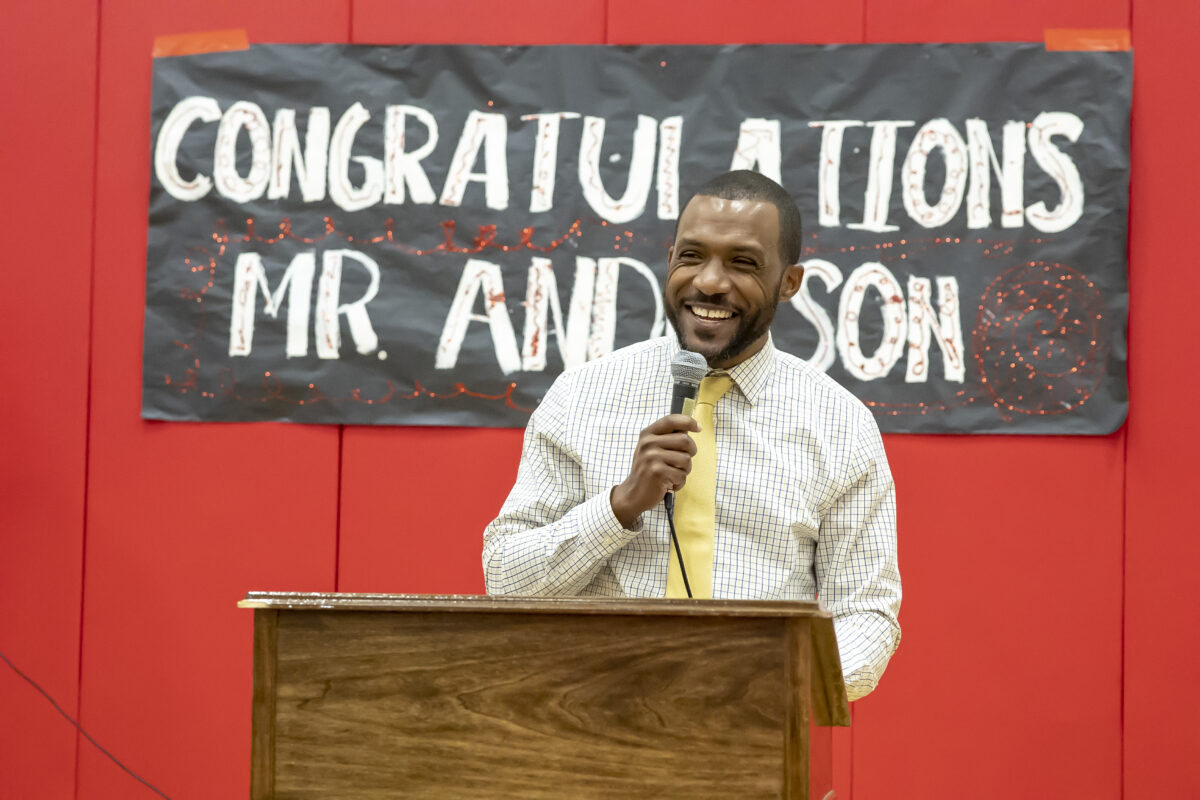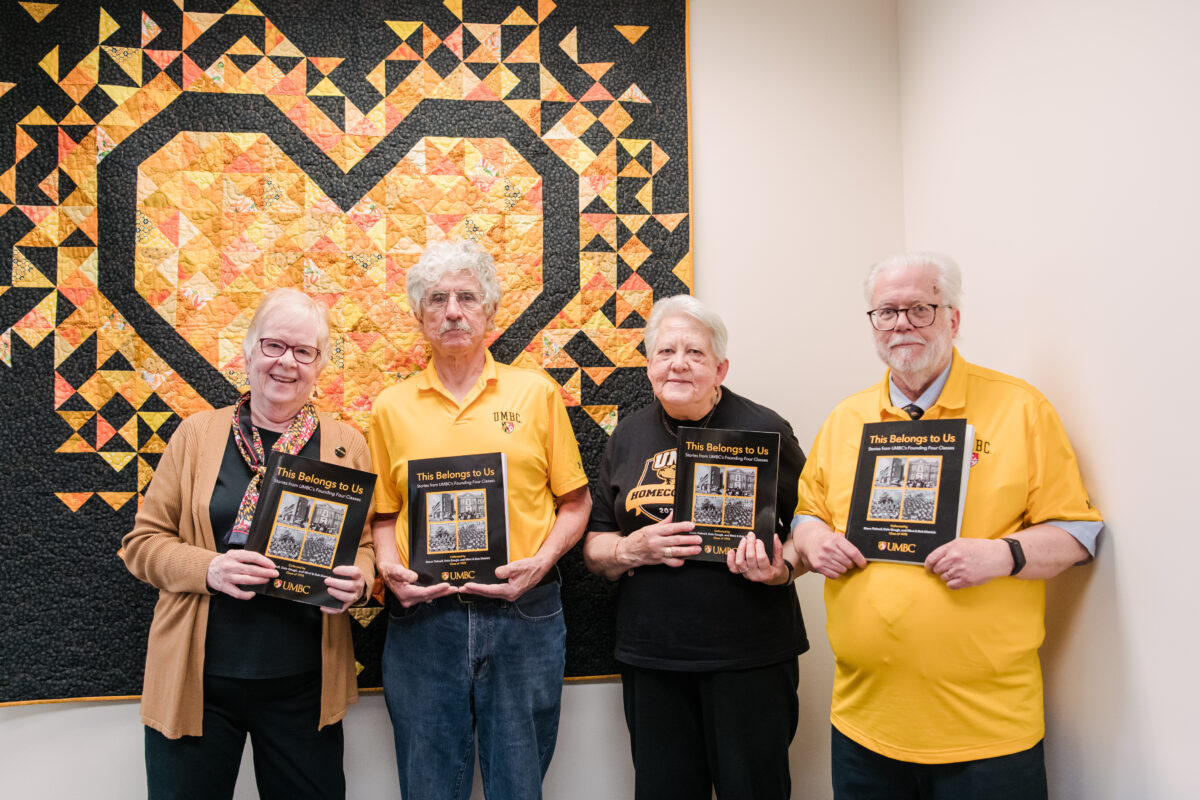American Studies professor Kimberly Moffitt felt like a stranger when she moved to Baltimore. But her research on public attitudes about the gritty HBO crime drama brought the city closer to home.
By Richard Byrne ’86
Photos by Howard Korn
When assistant professor of American Studies Kimberly Moffitt arrived in Maryland and moved into the Liberty Heights neighborhood in the northwest section of Baltimore four years ago, she had an almost immediate aversion to the place. For Moffitt, Charm City wasn’t so charming.
“I’ve lived in a number of major cities,” she says. “New York, Boston, Chicago and D.C. And this one seemed to rub me the wrong way.”
So Moffitt sought to resolve her dilemma as many academics do: Make her strange new environment the subject of pedagogy by creating a course on Baltimore in film.
“It forced me to learn about Baltimore,” Moffitt recalls. “This is going to be home. So how can I embrace it in ways that fit my own interests? And how we bring film and other media into how we understand America is precisely what I’m interested in.”
Moffitt stocked her course with works by the best-known names who had used the city as a setting for their films. But she balked at first when a colleague insisted that she include the critically-acclaimed HBO series The Wire – which tracks the intersection of the drug trade with the decline of American cities and institutions.
“He said it was the most contemporary example using the city as a landscape,” Moffitt recalls. “And he asked: What were the chances of the students knowing John Waters or Barry Levinson or even Charles Dutton in their age group? You have to talk about The Wire because that’s what they know.”
Moffitt picked up on The Wire in its fourth season – which included a masterful excavation of the problems facing urban schools. And like many viewers, she got hooked. And not merely as a fan of the show, but also as a scholar who saw an opportunity – through the show’s unblinking gaze on the grit and graft of Baltimore – to analyze how the city’s residents and others saw themselves and their metropolis.
FINDING BALTIMORE’S VOICE
Moffitt observes that academics in various disciplines such as sociology, urban planning and political science were already mining The Wire for their research. “The voice I felt wasn’t being talked about was the perspective of Baltimore itself,” she says. “People who live and work here day-to-day. Do they love it? Do they hate it? Is it a bad reflection on their city – or truth telling that needs to be heard?”
So Moffitt set out to find them. She initially wanted to create focus groups with various constituencies represented in The Wire (teachers, journalists, law enforcement), but ran into some yellow “Do Not Cross” tape – particularly with Baltimore’s finest.
“It was hard to get police officers to talk about The Wire, period,” says Moffitt. Her efforts extended to walking unannounced into precincts and approaching squad cars, but availed her little in the way of scholarly insight.
“The thing I heard back from the [Baltimore Police Department] public affairs office was, ‘We do not participate in entertainment research,’” Moffitt recalls. So the UMBC professor pursued another avenue to obtain her data: a web survey. The full survey featured 55 questions, including 14 targeted specifically at local residents.
Moffitt’s sample grew quickly from current and former Baltimore residents to a cohort that included Wire viewers from across the United States. She even put up links to the survey on a Facebook page devoted to the series.
After receiving queries from the United Kingdom (where The Wire was being aired a few years behind its U.S. showings) and elsewhere, she opened up the survey to anyone with an interest in the show. Eventually, Moffitt received 800 completed responses.
Opening up the survey did result in less than 25 percent of the responses coming from the target audience. But it did reveal the depth and breadth of the show’s popularity – and how those outside the city viewed Baltimore after watching The Wire. (Season Four, by the way, was the fan favorite of all five seasons.)
“I’m happy with the survey,” says Moffitt, who is now doing follow-up interviews with Baltimore-area survey participants who agreed to be interviewed at greater length about their perceptions of the interplay between the city, various professions and the show. She’s hoping that those interviews will lead to other local residents that the web survey didn’t pick up.
“The voices I hear are loving the city, loving the realism of The Wire, but worrying about its effect on tourism,” she concludes.
Part of what Moffitt hopes to do in the follow-up interviews is “to cultivate greater diversity in the voices.” In particular, she says, the fact that more than two-thirds of the web survey respondents were white means that she has some work to do to encompass the city’s full ethnic weave.
“The city is not 68 percent white,” she says. “I want to get a greater sense of racial and ethnic diversity in response to the show. I really want to hear the voice of Baltimore.”
MAKING SENSE OF MOTHERS
While her own ambivalence about Baltimore sparked her initial scholarly interest in The Wire, Moffitt’s latest work is now plunging headlong into the politics of gender and race depicted in the series.
“I have issues with the show,” Moffitt says. “I think it’s fabulously written, but I do have issues with it… especially how it can perpetuate the ways in which we look at certain people.”
In particular, Moffitt says that she is drawn to the topic of how black mothers are depicted on the show. “Personally, I was very taken aback by these moms,” she says.
Indeed, as the professor and this reporter tally up the mothers represented on The Wire during an interview, it’s agreed that only two women could be considered “good” mothers – one is a white police officer and the other is an older black adoptive mother. The preponderance of black mothers on the show are abusive, neglectful and – in some cases – willing to sell out their children for the good of a larger drug syndicate or their own personal comfort.
“There’s a particular story being told,” Moffitt says. [University of Maryland at College Park professor of sociology] Patricia Hill Collins talks about there being these particular images that are constantly recycled about black women – and one of them is the bad black mother. That easily, without much effort, fits into what [series creators] David Simon and Ed Burns are doing on The Wire.”
Moffitt says that her interest in this aspect of The Wire springs from similar work she did as a scholar with Stevenson University professor Heather Harris on the films of Spike Lee. “One of the things that sticks out time and again [in Lee’s films] is how he reports on motherhood – and it’s not very flattering.”
When Moffitt’s survey asked respondents what they thought was missing from the show, a number of them – a majority of whom were white and middle-class and male – commented that they felt that their voice was missing from the series and that they did not see their Baltimore reflected in the show.
As a researcher who sought to help find her place in a strange city through a close study of The Wire, Moffitt says that she too is searching for her voice in the show as she looks for its missing good black mothers.
“As a black woman who is a wife and mother,” Moffitt asks, “where am I in this process? I live in Baltimore yet I do not see the women who look like me. Where is the face of the concerned black woman who is simply trying to succeed at keeping her family together and in good health, physically, emotionally, and spiritually?”
Tags: American studies, Fall 2010




